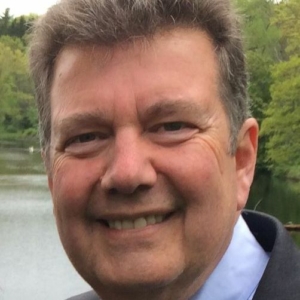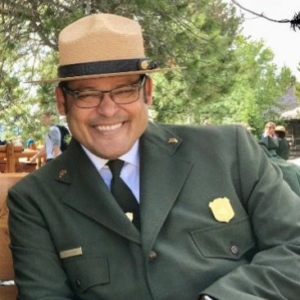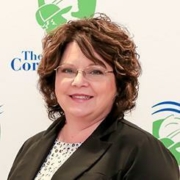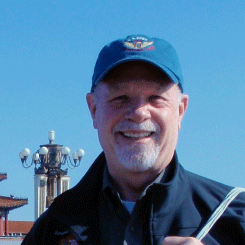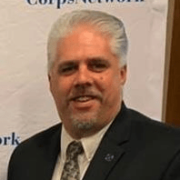

Learn about the nominees for the 2025 Project of the Year Award! We are inspired by all our remarkable finalists and their outstanding service to local communities and the young people they engage.
The Project of the Year Award recognizes achievements, innovation, and impact in the Corps world. Learn more about Awards here. The winners will be recognized at The Corps Network’s 2025 National Conference, March 11 – 13. Stories are arranged in alphabetical order by Corps name.
American YouthWorks
Asian and Pacific Islander Crew: Cultivating Community and Environmental Resiliency
Texas
Supported by AmeriCorps
The Asian and Pacific Islander (API) Crew of American YouthWorks Conservation Corps (AWY-CC) was developed to create meaningful opportunities for young API community members in Houston, TX. The program was created in response to the growing API population and the lack of API representation across the green industry. In partnership with the National Park Foundation (NPF), AYW-CC invited community organizations, youth, and institutions to participate in the recruitment and development of the program. This ensured that the community was involved and able to inform program decisions.
The API Crew offered young people career training, industry certifications, community engagement opportunities, professional development, and more. The hope is to enable API youth to become leaders in the environmental field. The Crew also featured specialized sessions on career opportunities and involved mentors from similar cultural backgrounds. The model emphasizes intentional engagement and is a template for bringing diverse voices and perspectives into the green space. Some API crew participants have been able to use their AmeriCorps education stipends toward continuing their education, while others have returned for another service term for Texas Conservation Corps. All members rated their experience as a five on a scale of one to five.

Appalachian Mountain Club
Long Pasture Wildlife Sanctuary’s All Persons Trail
Massachusetts
Long Pasture Wildlife Sanctuary’s All Persons Trail is a 1,900-foot long, six-foot wide, universally accessible trail designed by Mass Audubon. The trail includes a boardwalk, sitting areas, and a viewing platform and many sensory features, including a post-and-rope guiding system, braille descriptions, an audio tour, and a sensory map experience. The trail goes through five habitat types, including fields, tidal flats, salt marshes, forests, and freshwater ponds.
The project was Appalachian Mountain Club’s (AMC) first on Cape Cod and gave crews the experience of working ina coastal environment. All Corpsmembers walked away from the project with a new set of hard and soft skills, and many members signed up for a second service term. The project also helped AMC to expand their expertise in creating accessible trails for all and reinforced their relationship with their partner, Mass Audubon. AMC is currently working on similar All Person’s Trails in MA as well as a trail in Acadia National Park in Maine.

California Conservation Corps
Backcountry Trails Program
California
Supported by AmeriCorps
The Backcountry Trails Program (BCTP) has been running for the past 45 years as one of the longest-running targeted programs of the California Conservation Corps (CCC). During the 2024 season, the BCTP had 92 Corpsmembers spread across seven crews. Each crew ventured into the California wilderness, completely disconnected from society for a five-and-a-half-month immersive experience. Throughout their tenure, crews have worked out of remote campsites, hiked up to 20 miles a day, and worked on projects maintaining and improving trails and the environments around them. Work includes clearing brush and logs, rebuilding trails, building and repairing bridges, and more. During the 2024 season, crews treated a combined 366 miles of trail, much of which had been impacted by the recent surge in CA wildfires. This work speaks to the legacy of the program’s past 45 years, including 13,767 miles of trail maintenance and a 93% satisfaction rate from program alumni.
For many Backcountry Trails Program members, the BCTP offers an intensely immersive experience that allows members to be in nature and serve their community. While trail-focused, the program does not require any previous experience and instead teaches members the skills they need to be successful. The program allows Corpsmembers to develop their own communities, reflect on their work and learning, and see in real-time the impact that they can make together.

Conservation Corps Minnesota & Iowa
Staircase Rebuild in Judge C.R. Magney State Park
Minnesota
Supported by AmeriCorps
The Northwoods Crew of Conservation Corps Minnesota & Iowa (CCMI) rebuilt a set of stairs at Judge C.R. Magney State Park in Minnesota. The staircase, which had been washed out by storm damage, provides access to a part of Devil’s Kettle waterfall within the park. While CCMI does staircase replacements frequently, this particular project was noteworthy due to the popularity of the trail and waterfall, along with the style of staircase construction using gabion baskets. These factors, among other aspects,, made this project a rewarding experience and garnered public recognition for the Corps.
The project has had an extremely positive reaction from the community, with community members mentioning that they are grateful for the hard work and the renewed ease of access to the park’s waterfall. The crew of six Corpsmembers spent over 1,170 hours completing the project. They hauled tons of lumber and were able to design and implement much of the project themselves. Doing the work by hand gave Corpsmembers a sense of pride in the project that they hadn’t experienced with previous projects. They enjoyed being able to make a positive impact on the park and the visitors that enjoy it.

Environment for the Americas
Let’s Go Birding! Internship Program
Nationwide
Environment for the Americas’ (EFTA) Let’s Go Birding! Internship Program partnered with the National Park Service to create more inclusive experiences in nature. The program seeks to raise awareness about the needs of individuals who wish to visit national parks but face challenges related to mobility, vision impairment, neurodivergence, and hearing loss. Six interns were recruited and hired in collaboration with four national parks to provide their unique perspectives on living as persons with disabilities to the parks.
Interns developed partnerships with organizations serving disabled communities and created resources to help participants connect with birds and nature. They also piloted inclusive events at the four parks. EFTA’s project is unique in its dual focus of providing pathways in conservation for individuals with disabilities and prioritizing hands-on experiences that enable participants to fully engage with natural spaces. Six interns were selected for the program, all of whom were profoundly impacted by their experience. For many, it was their first time working outdoors and in the community. For some, it was their first work experience. One intern is even pursuing a career working with the National Park Service.

Great Basin Institute
Lake Tahoe Basin Management Unit Rx Burn Crew
California
Supported by AmeriCorps
The Lake Tahoe Basin Management Unit (LTBMU) encompasses over 154,000 acres of National Forest lands surrounding Lake Tahoe. This area includes critical habitats and is a popular destination for year-round outdoor recreation. The Great Basin Institute (GBI) is now in its second year of working with the U.S. Forest Service to conduct prescribed burns and other fire management projects on these important public lands. GBI AmeriCorps members on the Rx Burn Crew receive the Firefighter Type 2 certification, which allows them to engage in igniting and monitoring pile and understory burns. Crews set up hoses, monitor fire behavior, and strategically plan the burns when weather conditions are favorable.
This initiative is GBI’s first venture into serving as a full-fledged fire resource in the Tahoe region. This year alone, crews prepared approximately 400 acres for burning this fall and have conducted burns on about 50 acres, with a goal of 300 acres by the end of the season. In addition, the crews have burned approximately 300 understory piles. The success of this program has led other National Forests to contact GBI about operating similar wildfire management crews. This new focus on prescribed fire has helped GBI open new professional pathways for Corpsmembers in a high-demand area of environmental conservation. Six of the nine members from the inaugural season gained skills that led directly to employment in the forestry field, with two advancing to field leadership roles.

Greater Miami Service Corps
EcoBeautify Home Initiative
Florida
Supported by AmeriCorps
The EcoBeautify Home Initiative seeks to enhance housing quality and energy efficiency for seniors in low-income neighborhoods in Miami-Dade County. With support and partnership from Volunteer Florida and Miami-Dade County Public Housing and Community Services, Greater Miami Service Corps (GSMC) engages AmeriCorps members in delivering “Healthy Homes” services. This includes cleaning or replacing air filters, installing LED light bulbs, and caulking windows or sealing doors to minimize drafts and conserve energy. The Corpsmembers also provide exterior aesthetic and structural improvements. This includes repairing or replacing damaged wood facades, painting to enhance curb appeal and protect buildings from weather damage, and landscaping services to further cultivate accessible outdoor spaces for residents. Going forward, as part of the U.S. Forest Service Urban and Community Forestry Program, this initiative will also include tree planting and maintenance services to address urban heat islands.
The EcoBeautify Home Initiative has expanded GMSC’s traditional beautification projects to offer a holistic package of home improvements targeted at supporting seniors. This work ensures that seniors, who are particularly vulnerable to extreme temperatures and rising energy costs, receive services that improve both their quality of life and financial stability. Corpsmembers are also trained in a broader set of skills in home energy upgrades and landscaping, equipping them with experience for high-demand green jobs.

HistoriCorps – Job Corps
HistoriCorps’ Job Corps Future in Trades Program
National
In its third year, HistoriCorps‘ Job Corps Future in Trades initiative – operated in partnership with the U.S. Forest Service Heritage Program – engaged 34 students from five Job Corps Civilian Conservation Centers (JCCCC) in educational and hands-on historic preservation programming. The program provides students with exposure to career pathways in construction and conservation while directly contributing to the restoration of significant historic structures across federal lands.
Throughout 2024, HistoriCorps facilitated seven multi-week preservation projects led by some of the best educators and seasoned preservation experts from across the country. Realizing that many students lacked the means to travel or purchase gear, HistoriCorps equipped participants with camping packages and sometimes brought the educators and project to the JCCCC to reduce barriers. Job Corps students gained hands-on experience helping preserve and repair cabins, fire lookout towers, and pavilions – some of which were originally constructed by the Civilian Conservation Corps more than 80 years ago. Each Corpsmember earned $200 per day, as well as service hours that count towards a Public Lands Corps hiring certificate. Some 85% of students reported that this initiative made them more interested in pursuing a career in preservation or related trades. Each participant is now part of HistoriCorps’ database, giving the organization a greater ability to staff and execute future projects.

Maryland Conservation Corps
Swallow Falls Hemlock Restoration
Maryland
Supported by AmeriCorps
Eastern hemlock forests are among the most biodiverse ecosystems in the mid-Atlantic region, hosting over 120wildlife species. Eastern hemlock trees regulate temperature and humidity, which significantly impacts stream health. Commercially, eastern hemlocks provide nearly a quarter of all commercial softwood products produced in the Northeastern United States. Unfortunately, invasive hemlock wooly adelgids (HWAs) are now found in most, if not all, remaining hemlock stands in the region. Without intervention, a tree infected by HWAs can die within as little as four years. This is where AmeriCorps members with the Maryland Conservation Corps (MCC) step in to help.
The Swallow Falls State Park eastern hemlock stand is one of the oldest forest ecosystems in Maryland, with many trees estimated at over 300 years old. In 2024, under the direction of the Maryland Department of Agriculture Forest Pest Management team, MCC members treated 7,698 eastern hemlocks with pesticides that protect against HWAs. These treatments, which were completed in just six days, are effective for up to seven years. Hemlock treatment is simple but requires human energy. Many MCC members report that hemlock restoration work was one of the most rewarding projects of their term. Former participants have continued in the conservation field, with some using their Segal AmeriCorps Education Award to pursue a pesticide applicator license. MCC notes that this important project – with a short duration and long-lasting impact – can be worked into almost any crew’s schedule. This is work other Corps can take up, too.

Montana Conservation Corps
Rewilding Montana’s Prairie
Montana
Supported by AmeriCorps
In response to years of severe drought in the Northern Plains, Montana Conservation Corps (MCC) is working with a range of partners – including ranchers and state and federal land agencies – to implement measures to restore the vitality of prairie streams. These ephemeral waterways are essential for sustaining wildlife and ranching operations. MCC members wade into muddy stream channels to install structures such as beaver dam analogs (BDAs) and post-assisted log structures (PALs). These low-tech restoration measures slow runoff, minimize erosion, pool water, and raise groundwater levels, helping sustain fertile grasslands. As one MCC AmeriCorps member said, “We built well over 250 structures this year and saw the impact almost immediately. There was less sediment in the stream because of what we did. The grass was even greener in areas we worked.”
MCC started BDA drought resilience work in 2022 with individual placement members. In 2024, the program had three crews focused full-time on BDA projects, with additional crews tackling projects in diverse locations ranging from downtown Bozeman to remote wildlife refuges in South Dakota. The initiative has expanded thanks in part to the AmeriCorps rule change, which allows for public-benefit projects on private lands. MCC notes that the success of this program has also hinged on allowing members to take the lead and build local relationships. MCC AmeriCorps members are highly respected in the rural communities where they’ve worked. As one rancher said, “…MCC folks have immersed themselves into our local communities, and we’ve learned so much from each other. I don’t think you can put a true value on those connections.”
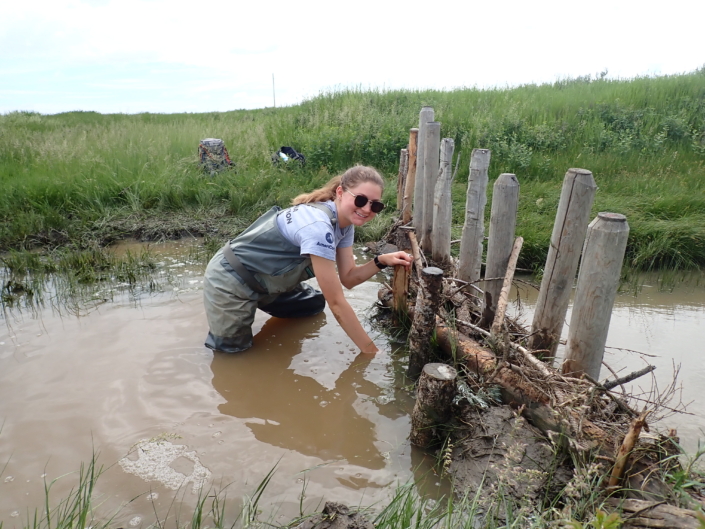
Operation Fresh Start
Dane County Parks
Wisconsin
Supported by AmeriCorps
The Dane County Parks Prairie Seed Challenge promotes ecological restoration by collecting native prairie plant seeds. Held each fall, this project unites volunteers, Corpsmembers, and industry professionals to gather seeds from endangered prairie species in designated parklands. This collaborative effort enhances ecosystem health while participants engage in fun, friendly competition. In the 2024 Prairie Seed Challenge, 150 participants from eight organizations–including Dane County Parks, U.S. Fish & Wildlife, Wisconsin Department of Natural Resources, Dane County Land & Water, Dane County Forestry, Groundswell Conservancy, and Ducks Unlimited–collected seeds from 28 species across five parks, which were later processed for winter planting. About 75 participants represented Operation Fresh Start (OFS) this year, and OFS Corpsmembers were awarded the runner-up trophy for the amount of seed they collected, narrowly missing out on the first-place trophy awarded to the U.S. Fish and Wildlife.
The Prairie Seed Challenge significantly contributes to Dane County Parks’ prairie seed collection efforts, which have averaged over $1 million in value each of the last three years. This project also contributes to restoring Wisconsin’s endangered prairies, mitigating flooding, and improving water quality. For Corpsmembers, the event provides hands-on training in conservation skills, exposure to potential employers, and connections leading to jobs and federal hiring credentials, such as the Public Lands Corps Certification. These opportunities strengthen pathways to sustainable careers in natural resource management.

Student Conservation Association
Wildland Fire Academy
Western U.S.
The Student Conservation Association (SCA)/USFS Wildland Fire Academy is addressing the growing wildfire crisis across the Western United States. This project fosters resilience and fire safety in vulnerable communities by focusing on hazardous fuel reduction and promoting environmental conservation. Teams of young conservationists are stationed across multiple national forests near high-risk communities to engage in wildfire suppression and prescribed burns. The Academy also prioritizes a range of backgrounds in the workforce by leveraging the Student Conservation Association’s (SCA) diverse participant base to enrich the U.S. Forest Service’s (USFS) workforce. The project offers hands-on experience and builds critical relationships between local communities and fire management agencies.
In addition to strong community connections, Corpsmembers gain advanced skills through this program, including federally recognized fire certifications that can lead to high employability in land management agencies. Approximately 40% of participants transition directly into careers with the USFS, National Park Service, or Bureau of Land Management. Communities benefit from enhanced fire resilience, cultural engagement, and economic stimulation through these Corpsmembers’ contributions. These efforts not only reduce the risk of wildlife and improve environmental health but also strengthen the bonds between communities, Corps programs, and federal agencies.

Stewards Individual Placements
National Parks Boston Corps
Massachusetts
Supported by AmeriCorps
The National Parks of Boston Conservation Corps was designed to engage young adults in tackling challenges by preserving natural, cultural, and historical resources. Launched as a program of Conservation Legacy’s Stewards Individual Placements in partnership with AmeriCorps, the program focuses on implementing meaningful projects within the Boston National Historical Park and Boston Harbor Islands. Corpsmembers work alongside National Park Service staff and receive hands-on experience in science, energy efficiency, and ecological restoration. Projects include conducting energy audits of historic buildings, monitoring salt marshes, and creating environmental education programs. These efforts align with the National Park Service strategy to focus on science, mitigation, adaptation, and communication.
This program is preparing the next generation of environmental stewards and National Park Service officials. Participating Corpsmembers gained valuable real-world skills and experiences in conservation and community outreach, leading many to pursue green career pathways with the National Park Service or develop their leadership skills with Corps. Projects like energy efficiency assessments and salt marsh restoration improved park sustainability and exemplify impactful community collaboration in addressing resilience. This program has also enhanced community awareness by engaging over 1,200 individuals through events, tabling, and educational tools like the Boston Harbor webcam project.

San Jose Conservation Corps
Big Basin Fire Recovery Spikes 2024
California
Supported by AmeriCorps
San Jose Conservation Corps’s (SJCC) Big Basin Fire Recovery Spikes project played a crucial role in restoring trails within Big Basin State Park after the devastating CZU Lightning Complex Fire burned 97% of the park in 2020. With funding from the Forestry Corps Grant Program and oversight from Santa Cruz District State Parks, this project involved ten back-to-back eight-day “spikes” during which Corpsmembers camped on-site and worked on trail reconstruction. Over five months, Corpsmembers worked on over 19,000 linear feet of trail, brushing over 7 acres of land and removing approximately 123 large hazard trees and countless more small shrubs and vegetation. Corpsmembers also built several structures with turnpikes, steps, and 85 cubic feet of retaining walls constructed of junk, wood, and logs.
Participating SJCC Corpsmembers, many of whom were undertaking their first camping and trail reconstruction experience, developed valuableskills in land management, chainsaw operation, and ecological restoration while clearing hazardous trees, reducing ladder fuels, and restoring infrastructure, including steps and retaining walls. This project has inspired many to pursue careers in conservation with CalFire and state parks. The project’s restoration efforts have reopened Big Basin State Park to the public and improved its resilience to future wildfire risks. Visitors can now enjoy improved access to the park while learning about fire recovery and ecological resilience.




















